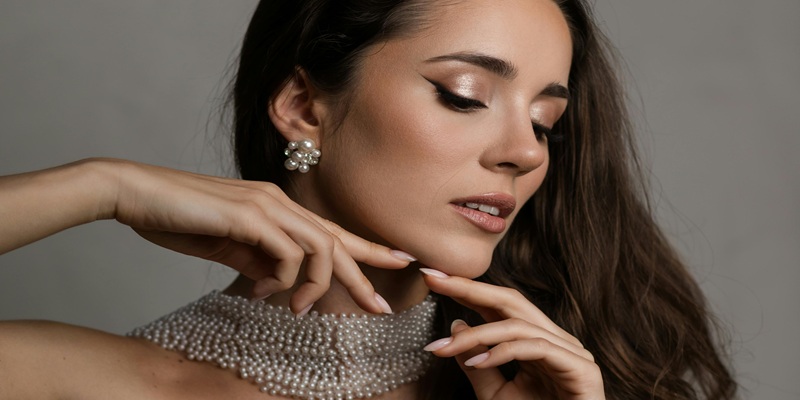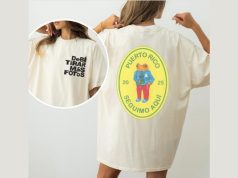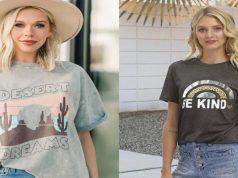The luxury landscape is experiencing a seismic shift. Where once exclusivity and rarity were the sole markers of prestige, today’s discerning consumers are demanding something more profound: alignment between their values and their purchases. The modern luxury buyer doesn’t just want to own something beautiful—they want to feel good about owning it.
This evolution is particularly pronounced in the jewelry sector, where traditional notions of luxury are being challenged by a new generation of consumers who refuse to compromise between elegance and ethics. The question is no longer simply “Is it stunning?” but rather “What story does it tell about who I am and what I stand for?”
Enter the era of conscious consumption, where sustainability isn’t just a buzzword—it’s becoming the new standard of sophistication. This transformation is reshaping everything from how gems are sourced to how luxury brands communicate with their clientele.
Defining Green Luxury in the Modern Era
Green luxury represents a fundamental reimagining of what it means to live well. It’s the intersection where environmental consciousness meets aspirational living, creating a new category that refuses to accept the false choice between style and sustainability. Unlike traditional luxury, which often derived its value from scarcity and exclusivity, green luxury finds its worth in transparency, innovation, and positive impact.
The fashion industry has already embraced this shift. Stella McCartney has built an empire on cruelty-free luxury, while brands like Gabriela Hearst incorporate sustainability into haute couture. Hermès has invested heavily in mushroom leather alternatives, and Chanel has committed to carbon neutrality. These moves signal that sustainability is no longer a niche concern—it’s becoming central to luxury’s future.
In the jewelry world, this transformation is even more striking. The industry, long associated with mining and traditional sourcing methods, is experiencing a renaissance driven by technological innovation and changing consumer expectations. Brands are discovering that ethical practices don’t diminish luxury—they enhance it by adding layers of meaning and purpose to each piece.
The new luxury consumer understands that true elegance extends beyond surface beauty to encompass the entire lifecycle of a product, from creation to disposal.
The Rise of Sustainable Jewelry
Sustainable jewelry has evolved from a fringe movement to a mainstream phenomenon, driven by several converging trends. The most significant is the rapid advancement and acceptance of lab-grown diamonds, which offer identical beauty to mined stones while eliminating the environmental and ethical concerns associated with traditional diamond mining.
Lab-grown diamonds represent more than just a technological achievement—they embody a philosophical shift toward conscious creation. Using advanced techniques like Chemical Vapor Deposition (CVD) and High Pressure High Temperature (HPHT), these diamonds are cultivated in controlled environments that replicate natural diamond formation processes. The result is gems that are chemically, physically, and optically identical to mined diamonds, but with a fraction of the environmental impact.
Ethical sourcing has become equally important. Consumers are increasingly interested in the provenance of their gemstones, demanding transparency about mining practices, labor conditions, and environmental impact. This has led to the rise of certified conflict-free stones and the development of blockchain technologies that track gems from mine to market.
Traceability has emerged as a key differentiator in the luxury jewelry market. Brands that can provide detailed documentation about their stones’ origins—from the specific mine or laboratory to the artisans who cut and set them—are finding enthusiastic audiences among conscious consumers.
The movement toward cruelty-free gemstones extends beyond diamonds to colored stones, with synthetic emeralds, rubies, and sapphires gaining acceptance among luxury buyers. These lab-created alternatives offer consistent quality and stunning beauty while supporting more sustainable practices.
The Psychology of Conscious Luxury Consumption
Millennials and Generation Z have fundamentally altered luxury consumption patterns. For these demographics, prestige isn’t just about owning something exclusive—it’s about owning something that reflects their values. Research shows that 83% of millennials consider sustainability when making luxury purchases, and this percentage continues to grow.
This shift represents a profound psychological evolution. Traditional luxury was often about display and status signaling—showing others what you could afford. Modern luxury is increasingly about personal alignment and authentic self-expression. Consumers want their purchases to tell a story about who they are, not just what they can buy.
The concept of “ethical prestige” is emerging, where the story behind a product becomes as valuable as the product itself. A lab-grown diamond engagement ring doesn’t just symbolize love—it represents a couple’s commitment to responsible choices and their vision for the future.
Social media amplifies this trend by making the stories behind products more visible and shareable. Instagram posts about sustainable jewelry purchases often emphasize the ethical choice as much as the aesthetic appeal, creating a new form of conscious status signaling.
The psychological satisfaction derived from sustainable purchases is measurably different from traditional luxury consumption. Studies indicate that consumers experience longer-lasting satisfaction from purchases that align with their values, creating stronger emotional connections to their jewelry.
Green Luxury Choices in Practice
Forward-thinking jewelry brands are pioneering innovative approaches to sustainable luxury. Pandora’s complete transition to lab-grown diamonds in 2021 marked a watershed moment, proving that major luxury players could successfully pivot to sustainable practices without compromising their market position.
Smaller, independent brands are often leading the charge with even more radical approaches. Companies like Brilliant Earth have built their entire identity around ethical sourcing, while brands like Clean Origin focus exclusively on lab-created diamonds. These companies demonstrate that green luxury choices aren’t just about adopting sustainable practices—they’re about making sustainability central to the brand’s value proposition.
The integration of lab-created diamonds into sustainable fashion represents a perfect convergence of innovation and responsibility. These gems offer all the brilliance and prestige of traditional diamonds while supporting environmentally conscious values. Major fashion houses are taking notice, with several incorporating lab-grown stones into their high-jewelry collections.
Technology companies are also entering the space, using blockchain to create unprecedented transparency in gem sourcing and authentication. These innovations make it possible for consumers to trace their jewelry’s journey from creation to purchase, adding layers of meaning and trust to each piece.
The rise of circular jewelry models—where brands offer trade-in programs and recycling services—further demonstrates how sustainability can enhance rather than compromise luxury experiences.
The Industry Response and Market Evolution
Traditional jewelry houses are responding to these shifts with varying degrees of enthusiasm and innovation. Some are embracing the change, investing heavily in sustainable practices and lab-grown alternatives. Others are adapting more cautiously, concerned about disrupting established supply chains and brand heritage.
The market data is compelling: the lab-grown diamond segment is projected to grow at a compound annual growth rate of over 7% through 2030, while consumer surveys consistently show increasing preference for sustainable luxury options. This growth isn’t coming at the expense of overall luxury consumption—it’s expanding the market by attracting new consumers who previously avoided jewelry due to ethical concerns.
Celebrity endorsements and red-carpet appearances featuring lab-grown diamonds have helped normalize these alternatives in luxury circles. When A-list celebrities choose sustainable options for major events, they send powerful signals about the direction of luxury fashion.
The investment community has also taken notice, with significant funding flowing into sustainable jewelry startups and established brands pivoting toward greener practices.
Read More – Top 10 Best Fitness Watches For Men
The Future of Conscious Elegance
The transformation of the jewelry industry reflects a broader evolution in how we define and pursue luxury. The future belongs to brands that can seamlessly merge beauty with purpose, creating pieces that satisfy both aesthetic desires and ethical imperatives.
This isn’t about sacrificing quality or prestige—it’s about enhancing both through meaningful innovation. The most successful luxury brands of the next decade will be those that understand sustainability not as a constraint but as a creative catalyst, driving new forms of beauty and meaning.
As consumers become increasingly sophisticated about sustainability issues, the jewelry industry must continue evolving. The brands that thrive will be those that view green luxury not as a marketing strategy but as a fundamental reimagining of what it means to create and own beautiful things. In this new paradigm, the most elegant choice is also the most responsible one—and true luxury lies in having both.









